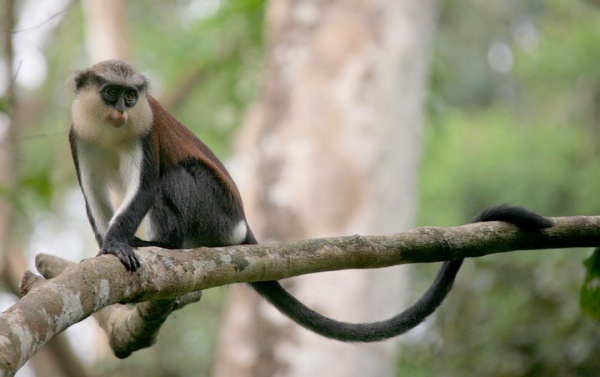Facts About Mona monkey
The Mona monkey, an intriguing Old World primate, inhabits the forests of western Africa, particularly from Ghana to Cameroon. Intriguingly, they also settled on the Caribbean island of Grenada, having been transported there on slave ships during the 18th century.
These monkeys are highly social creatures that live in groups within forested areas. Their diet primarily consists of fruit, but they also consume insects and leaves. They have distinctive brown agouti fur, a white rump, black tail and legs, and a blue-grey face adorned with a dark stripe. A notable feature is their cheek pouches, which they use to carry food.
In terms of size, males generally have a head-and-body length ranging from 410 to 630 mm, with tails extending 520 to 730 mm. Females are slightly smaller. Their natural habitat extends from eastern Ghana to western Cameroon, and they have been introduced to Grenada and São Tomé and Príncipe as well. Mona monkeys are quite adaptable and thrive in various forest types, especially near rivers.
These monkeys typically form groups of about twelve, led by a mature male. They spend their time foraging in the canopy for fruits, flowers, seeds, and insects. Known for their vocalizations, they often share their habitat with other monkey species like Lowe's Mona monkey and the crested Mona monkey.
Despite facing challenges such as habitat destruction and hunting, the Mona monkey's population remains relatively stable. However, due to these ongoing threats, the International Union for Conservation of Nature (IUCN) has classified them as near-threatened.

 South Sudan
South Sudan